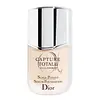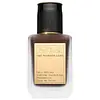Dior Capture Totale - Super Potent Serum Foundation SPF 20 PA++ Versus Pat McGrath Labs Sublime Perfection Foundation
What's inside
What's inside
 Key Ingredients
Key Ingredients

 Benefits
Benefits

 Concerns
Concerns

 Ingredients Side-by-side
Ingredients Side-by-side

Water
Skin ConditioningDimethicone
EmollientMethyl Trimethicone
Skin ConditioningEthylhexyl Salicylate
UV AbsorberLauryl PEG-9 Polydimethylsiloxyethyl Dimethicone
Skin ConditioningPhenyl Trimethicone
Skin ConditioningSynthetic Fluorphlogopite
Glycerin
HumectantPentylene Glycol
Skin ConditioningSilica
AbrasivePhenylbenzimidazole Sulfonic Acid
UV AbsorberButylene Glycol
HumectantSorbitan Sesquioleate
EmulsifyingTromethamine
BufferingAcrylates/Dimethicone Copolymer
Skin ConditioningAframomum Angustifolium Seed Extract
Skin ConditioningPaeonia Lactiflora Root Extract
Skin ConditioningJasminum Officinale Flower Extract
MaskingLilium Candidum Bulb Extract
Skin ConditioningMica
Cosmetic ColorantDimethiconol
EmollientSodium Myristoyl Glutamate
CleansingGlyceryl Undecyl Dimethicone
Parfum
MaskingChlorphenesin
AntimicrobialCaprylyl Glycol
EmollientSodium Chloride
MaskingDimethicone/Vinyl Dimethicone Crosspolymer
Skin ConditioningPolysorbate 80
EmulsifyingSodium Surfactin
CleansingHydrogen Dimethicone
Aluminum Hydroxide
EmollientAdenosine
Skin ConditioningSodium Acetylated Hyaluronate
HumectantXylitol
HumectantTocopherol
AntioxidantPalmaria Palmata Extract
Skin ProtectingSodium Benzoate
MaskingHydrolyzed Soy Protein
HumectantTrehalose
HumectantPotassium Sorbate
PreservativeCI 77163
Cosmetic ColorantCI 77491
Cosmetic ColorantCI 77492
Cosmetic ColorantCI 77499
Cosmetic ColorantCI 77891
Cosmetic ColorantCI 77947
Water, Dimethicone, Methyl Trimethicone, Ethylhexyl Salicylate, Lauryl PEG-9 Polydimethylsiloxyethyl Dimethicone, Phenyl Trimethicone, Synthetic Fluorphlogopite, Glycerin, Pentylene Glycol, Silica, Phenylbenzimidazole Sulfonic Acid, Butylene Glycol, Sorbitan Sesquioleate, Tromethamine, Acrylates/Dimethicone Copolymer, Aframomum Angustifolium Seed Extract, Paeonia Lactiflora Root Extract, Jasminum Officinale Flower Extract, Lilium Candidum Bulb Extract, Mica, Dimethiconol, Sodium Myristoyl Glutamate, Glyceryl Undecyl Dimethicone, Parfum, Chlorphenesin, Caprylyl Glycol, Sodium Chloride, Dimethicone/Vinyl Dimethicone Crosspolymer, Polysorbate 80, Sodium Surfactin, Hydrogen Dimethicone, Aluminum Hydroxide, Adenosine, Sodium Acetylated Hyaluronate, Xylitol, Tocopherol, Palmaria Palmata Extract, Sodium Benzoate, Hydrolyzed Soy Protein, Trehalose, Potassium Sorbate, CI 77163, CI 77491, CI 77492, CI 77499, CI 77891, CI 77947
Water
Skin ConditioningCyclopentasiloxane
EmollientIsododecane
EmollientAlcohol
AntimicrobialGlycerin
HumectantPhenyl Trimethicone
Skin ConditioningIpdi/Di-C12-13 Alkyl Tartrate/Bis-Hydroxyethoxypropyl Dimethicone Copolymer
Aluminum Starch Octenylsuccinate
AbsorbentCetyl PEG/PPG-10/1 Dimethicone
EmulsifyingPolyglyceryl-4 Isostearate
EmulsifyingDisteardimonium Hectorite
StabilisingSodium Chloride
MaskingAluminum Hydroxide
EmollientBenzimidazole Diamond Amidoethyl Urea Carbamoyl Propyl Polymethylsilsesquioxane
Cosmetic ColorantCaprylic/Capric Triglyceride
MaskingDi-C12-13 Alkyl Tartrate
EmollientDisodium Stearoyl Glutamate
CleansingHexyl Laurate
EmollientPentaerythrityl Tetra-Di-T-Butyl Hydroxyhydrocinnamate
AntioxidantRubus Idaeus Leaf Cell Culture
Skin ConditioningPotassium Sorbate
PreservativeSodium Dehydroacetate
PreservativeCI 77891
Cosmetic ColorantIron Oxides
Water, Cyclopentasiloxane, Isododecane, Alcohol, Glycerin, Phenyl Trimethicone, Ipdi/Di-C12-13 Alkyl Tartrate/Bis-Hydroxyethoxypropyl Dimethicone Copolymer, Aluminum Starch Octenylsuccinate, Cetyl PEG/PPG-10/1 Dimethicone, Polyglyceryl-4 Isostearate, Disteardimonium Hectorite, Sodium Chloride, Aluminum Hydroxide, Benzimidazole Diamond Amidoethyl Urea Carbamoyl Propyl Polymethylsilsesquioxane, Caprylic/Capric Triglyceride, Di-C12-13 Alkyl Tartrate, Disodium Stearoyl Glutamate, Hexyl Laurate, Pentaerythrityl Tetra-Di-T-Butyl Hydroxyhydrocinnamate, Rubus Idaeus Leaf Cell Culture, Potassium Sorbate, Sodium Dehydroacetate, CI 77891, Iron Oxides
Ingredients Explained
These ingredients are found in both products.
Ingredients higher up in an ingredient list are typically present in a larger amount.
Aluminum Hydroxide is a form of aluminum. It can be naturally found in nature as the mineral gibbsite. In cosmetics, Aluminum Hydroxide is used as a colorant, pH adjuster, and absorbent.
As a colorant, Aluminum Hydroxide may add opacity, or reduce the transparency. Aluminum hydroxide is contains both basic and acidic properties.
According to manufacturers, this ingredient is an emollient and humectant. This means it helps hydrate the skin.
In medicine, this ingredient is used to help relieve heartburn and help heal ulcers.
There is currently no credible scientific evidence linking aluminum hydroxide in cosmetics to increased cancer risk.
Major health organizations allow the use of aluminum hydroxide in personal care products and have not flagged it as a carcinogenic risk at typical usage levels.
Learn more about Aluminum HydroxideCi 77891 is a white pigment from Titanium dioxide. It is naturally found in minerals such as rutile and ilmenite.
It's main function is to add a white color to cosmetics. It can also be mixed with other colors to create different shades.
Ci 77891 is commonly found in sunscreens due to its ability to block UV rays.
Learn more about CI 77891Glycerin is already naturally found in your skin. It helps moisturize and protect your skin.
A study from 2016 found glycerin to be more effective as a humectant than AHAs and hyaluronic acid.
As a humectant, it helps the skin stay hydrated by pulling moisture to your skin. The low molecular weight of glycerin allows it to pull moisture into the deeper layers of your skin.
Hydrated skin improves your skin barrier; Your skin barrier helps protect against irritants and bacteria.
Glycerin has also been found to have antimicrobial and antiviral properties. Due to these properties, glycerin is often used in wound and burn treatments.
In cosmetics, glycerin is usually derived from plants such as soybean or palm. However, it can also be sourced from animals, such as tallow or animal fat.
This ingredient is organic, colorless, odorless, and non-toxic.
Glycerin is the name for this ingredient in American English. British English uses Glycerol/Glycerine.
Learn more about GlycerinPhenyl Trimethicone is a silicon-based polymer. It is derived from silica.
Phenyl Trimethicone is used as an emollient and prevents products from foaming.
As an emollient, it helps trap moisture in the skin. It is considered an occlusive.
Learn more about Phenyl TrimethiconePotassium Sorbate is a preservative used to prevent yeast and mold in products. It is commonly found in both cosmetic and food products.
This ingredient comes from potassium salt derived from sorbic acid. Sorbic acid is a natural antibiotic and effective against fungus.
Both potassium sorbate and sorbic acid can be found in baked goods, cheeses, dried meats, dried fruit, ice cream, pickles, wine, yogurt, and more.
You'll often find this ingredient used with other preservatives.
Learn more about Potassium SorbateChances are, you eat sodium chloride every day. Sodium Chloride is also known as table salt.
This ingredient has many purposes in skincare: thickener, emulsifier, and exfoliator.
You'll most likely find this ingredient in cleansers where it is used to create a gel-like texture. As an emulsifier, it also prevents ingredients from separating.
There is much debate on whether this ingredient is comedogenic. The short answer - comedogenic ratings don't tell the whole story. Learn more about comegodenic ratings here.
The concensus about this ingredient causing acne seems to be divided. Research is needed to understand if this ingredient does cause acne.
Scrubs may use salt as the primary exfoliating ingredient.
Learn more about Sodium ChlorideWater. It's the most common cosmetic ingredient of all. You'll usually see it at the top of ingredient lists, meaning that it makes up the largest part of the product.
So why is it so popular? Water most often acts as a solvent - this means that it helps dissolve other ingredients into the formulation.
You'll also recognize water as that liquid we all need to stay alive. If you see this, drink a glass of water. Stay hydrated!
Learn more about Water